Go to All Blogs | African Birding Blogs | Birding Blogs | Mozambique Birding Tours | Zimbabwe Birding Tours | All our birding tours
This blog is reproduced here with kind permission from the African Bird Club
Bulletin: ABC Bulletin 19.1 March 2012, pp 83-93
Author(s): Chris Lotz
Summary. A two-week journey from Harare, in the centre of Zimbabwe’s high plateau, to the coastal city of Beira in Mozambique traverses a wide range of habitats and generates a respectable list of range-restricted birds, along with above-average chances of more widespread but generally elusive birds. Harare itself attracts some rare wetland birds, and travelling eastwards towards Mozambique then affords easy access to a suite of miombo woodland birds. The Eastern Highlands, straddling the Zimbabwe / Mozambique border, is the best or only site for several Afromontane forest birds. Finally, the vast Mozambican coastal plain, including areas such as Gorongosa and the Zambezi Delta, hosts numerous other localised birds. This article describes where to find the ‘specials’ of this rich transect, and provides advice on timing and logistics.
Mozambique is poorly known as a birding destination except amongst southern African birders, who have been visiting the country in substantial numbers for the almost two decades since the civil war ended. These visitors are in search of range-restricted birds as well as more widespread species relatively easy to locate in Mozambique such as African Pitta Pitta angolensis. By birding the mountains straddling the border between Mozambique and Zimbabwe, even relatively ‘old hands’ will almost inevitably encounter new birds, such as Swynnerton’s Robin Swynnertonia swynnertoni, Chirinda Apalis Apalis chirindensis and Roberts’s (Briar) Warbler Oreophilais robertsi, all of which are most easily seen in Zimbabwe. Boulder Chat Pinarornis plumosus is then within easy reach slightly further west towards Harare. Zimbabwe and Mozambique also possess large tracts of Brachystegia (miombo) woodland inhabited by a host of south-central African endemics found neither in South nor East Africa.
This article describes a birding journey originating in Harare in the middle of the Mashonaland Plateau of central Zimbabwe, through some fine miombo woodland to the forested Eastern Highlands of Zimbabwe that continue across the border into Mozambique, and then finally to the steaming coastal plains which occupy the bulk of Mozambique’s land surface. The journey across the coastal plain is interrupted by Mount Gorongosa (inhabited by Green-headed Oriole Oriolus chlorocephalus and many other specialities), before we continue to the Zambezi Delta and eventually to Beira on Mozambique’s central coast.
This route, which is easily followed on a 10–14-day trip, provides access to some of Zimbabwe and Mozambique’s finest birding. Birders who have already visited Tanzania / Malaŵi and South Africa, but who are looking for birds absent from or tough to locate in those countries (and elsewhere) will find this transect productive. Further south in Mozambique, there are quite a number of birds that are endemic to southern Mozambique and extreme north-eastern South Africa, but since these are fairly easy to find in South Africa, I ignore them here. Further north, many of the species can also be found quite easily in Tanzania and Malawi, except Namuli Apalis Apalis lynesi, which requires what can be described as a small expedition. In this article, I concentrate on a relatively poorly birded but highly productive route that currently only southern African birders know well. I will focus almost solely on ‘specials’ tough to find elsewhere.
I will discuss the following sites, during the descent from the high-altitude city of Harare to the hot and humid coast: Harare’s wetlands – Streaky-breasted Flufftail Sarothrura boehmi and other rare birds within the city’s limits; Miombo woodland between Harare and the Eastern Highlands with their associated endemics and Boulder Chat; the Eastern Highlands and Lowlands with two endemics and numerous other species that are most easily located here; Mount Gorongosa, a massif rising from the coastal plain; the Zambezi River Delta for forest birds, several of them range-restricted; and the Rio Savane wetlands.
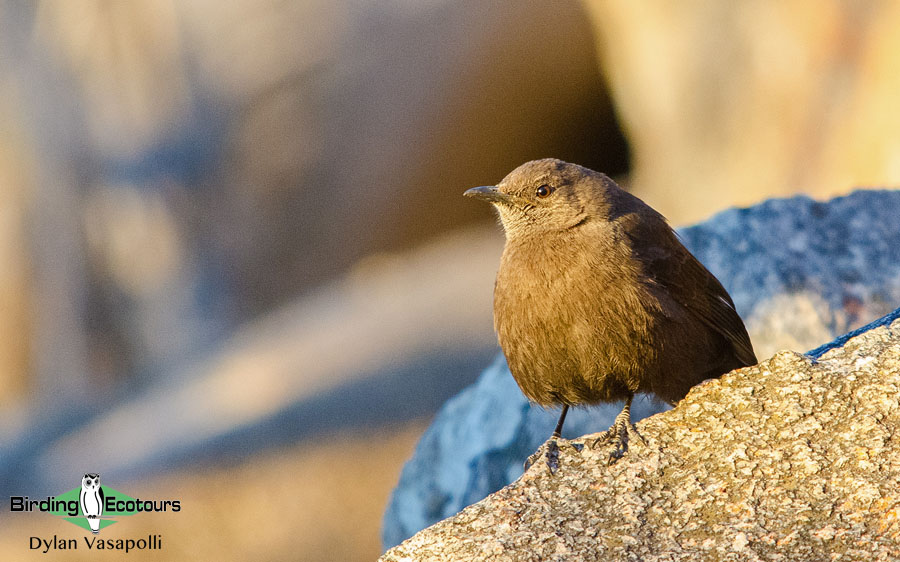
Harare
Monavale Vlei, Marlborough Vlei and some other, lesser known wetlands within the suburbs of Harare are excellent sites for finding several rare birds, including Streaky-breasted Flufftail and Striped Crake Aenigmatolimnas marginalis. Another elusive bird still sometimes found here is Blue Quail Coturnix adansonii, although it is more frequently seen in Mozambique, for example at Rio Savane at the opposite end of the transect described here. Black-rumped Buttonquail Turnix nanus also occurs here but is perhaps more easily encountered on the Mozambican coastal plain. These four species, and other commoner rallids, are usually found in wet years between January and March – comments at the end of this article on timing your trip. The latter two species also can be seen in Mozambique during the dry season. In addition, these wetlands are excellent areas in which to encounter African Grass Owl Tyto capensis, Rosy-throated Longclaw Macronyx ameliae, Locust Finch Paludipasser locustella, Cuckoo Finch (Parasitic Weaver) Anomalospiza imberbis and others – quite a number of these are frequently also seen at the Rio Savane near Beira in Mozambique.
Miombo Woodlands
Harare itself has excellent miombo birding but the woodlands en route to the Eastern Highlands, especially around Gosho Park, have more species and one can find the bulk of Zimbabwe’s miombo birds by spending a day between Harare and the Eastern Highlands. There are also superb (perhaps even better) miombo sites north of Harare, which can be visited if one has two nights in Harare and if too little rain has fallen to justify spending time at the seasonal wetlands within the city itself.
Restricted-range species of the Zambezian biome that are quite easy to see midway between Harare and the border with Mozambique include Boulder Chat, Miombo Rock Thrush Monticola angolensis, Cinnamon-breasted Tit Parus (rufiventris) pallidiventris, Miombo Tit P. griseiventris, Miombo Double-collared Sunbird Cinnyris manoensis and Black-eared Seedeater Serinus (Crithagra) mennelli. Spotted Creeper Salpornis spilonotus is quite common, often in mixed flocks that contain good numbers of miombo specialists. Many other birds can also be found here, including Shelley’s Francolin Francolinus (=Scleroptila) shelleyi, Pennant-winged Nightjar Macrodipteryx vexillarius, Woodland Pipit Anthus nyassae, White-breasted Cuckooshrike Coracina pectoralis, Green-capped Eremomela Eremomela scotops, Southern Hyliota Hyliota australis, Lazy (Rock-loving) Cisticola Cisticola aberrans, Collared Flycatcher Ficedula albicollis, Western Violet-backed Sunbird Anthreptes longuemarei and Cabanis’s Bunting Emberiza cabanisi.
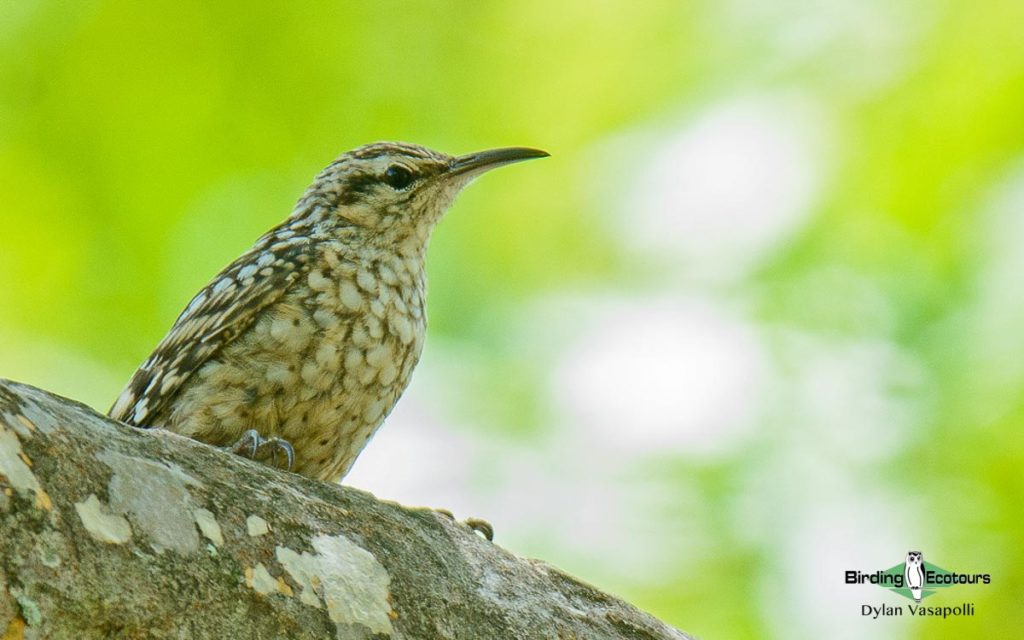
Eastern Highlands and Lowlands of Zimbabwe (continuing into Mozambique)
It takes half a day to reach the Eastern Highlands from Harare, and a full day to find most of the miombo endemics en route. The Eastern Highlands reach an altitude of 2,593m and contain healthy tracts of Afromontane forest as well as pristine grassland protected within Nyanga National Park. These latter are excellent for the Vulnerable Blue Swallow Hirundo atrocaerulea and the elusive Striped Flufftail Sarothrura affinis. The forests of ‘The Vumba’ and other sites within the Eastern Highlands are arguably the easiest place to find Swynnerton’s Robin. This and the highly localised Zimbabwe / Mozambique forest endemics, Chirinda Apalis and Roberts’s (Briar) Warbler, are usually found here with ease and this is probably the best site in the world for the three last-mentioned species. The highly range-restricted Stripe-cheeked Greenbul Andropadus milanjensis is very common here. Less localised but nevertheless biome-restricted Afrotropical highlands species easily found in the Eastern Highlands include Grey Cuckooshrike Coracina caesia, Orange Ground Thrush Zoothera gurneyi (quite easy to see here), Barratt’s Warbler Bradypterus barratti, Gurney’s Sugarbird Promerops gurneyi, Olive Bushshrike Chlorophoneus olivaceus and Red-faced Crimsonwing Cryptospiza reichenovii. These forests are extremely rich, being full of more widespread birds – one worthy of special mention is Buff-spotted Flufftail Sarothrura elegans because this is a relatively easy place (due to the habitat) to actually see, not just hear, this extremely skulking bird.
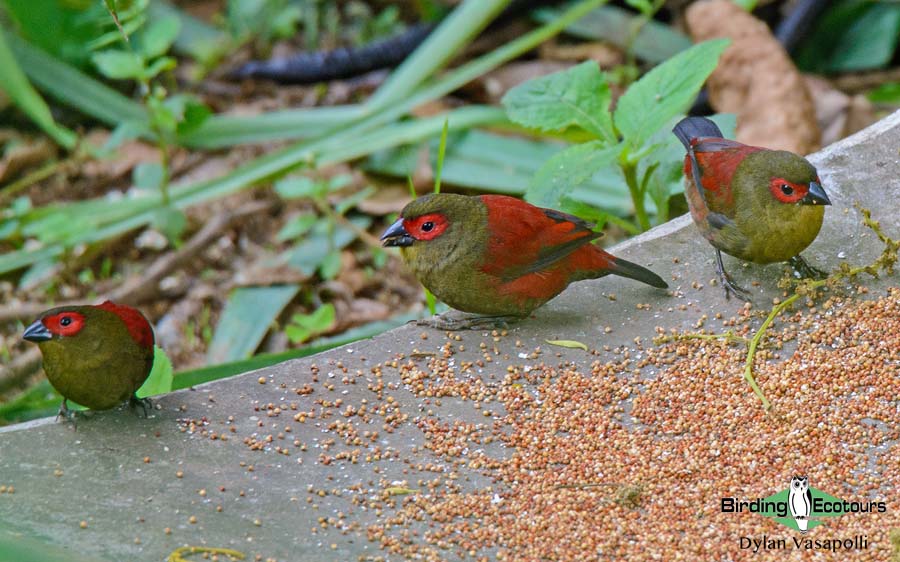
Scarce Swift Schoutedenapus myoptilus can be seen anywhere in the area, but it is best located at a breeding colony accessed via the Honde Valley in the nearby Eastern Lowlands. The latter region is also excellent for Pallid Honeyguide Indicator meliphilus and Lesser Seedcracker Pyrenestes minor (one of the toughest ‘specials’ of this birding route) along with more widespread birds such as Ayres’s Hawk Eagle Hieraaetus ayresii, Silvery-cheeked Hornbill Bycanistes brevis, Short-winged Cisticola Cisticola brachypterus, Black-fronted Bushshrike Chlorophoneus nigrifrons, Marsh (Anchieta’s) Tchagra Tchagra minutus anchietae, Red-throated (Peter’s) Twinspot Hypargos niveoguttatus, and many others. Because the Eastern Lowlands are contiguous with the coastal plain of central Mozambique, these birds are also often sought there. One of the most special birds now well ‘staked-out’ in the Eastern Lowlands (but in the Burma Valley below ‘The Vumba’, not in the Honde Valley) and at a few sites in central Mozambique is Zambezi (Green) Indigobird Vidua codringtoni. Frustratingly, this bird attains full breeding plumage only in the wet season (mainly January to March) when it is reasonably easy to find (especially if their display perches are known) as well as to identify.
Into Mozambique – across the flats to Mount Gorongosa
The Eastern Highlands straddle the international boundary between Zimbabwe and Mozambique. All of the Eastern Highlands ‘specials’ mentioned above can also be found just across the border in Mozambique, for example at the beautiful Mount Tsetserra, but they are more easily found in Zimbabwe. However, after travelling further east into Mozambique, the isolated massif of Mount Gorongosa rises abruptly above the coastal plain to 1,863 m (www.gorongosa.net). This is an excellent site for Green-headed Oriole. There are a few isolated populations of this unusual oriole between here and Tanzania, but this mountain is the only place to find the endemic subspecies O. c. speculifer. Pallid Honeyguide is usually heard, but not always easily seen, in the same forest that the oriole inhabits. Isolated populations of Swynnerton’s Robin and Chirinda Apalis also occur here. The heathland atop the massif supports an endemic subspecies of Greater Double-collared Sunbird Nectarinia afra amicorum.
The forests supporting the important birds mentioned above have been severely reduced in size, but the mountain has recently been incorporated into Gorongosa National Park, and its sacred status also affords limited protection – in fact, special permission from the local chief needs to be obtained before birding this site. The ascent of the mountain from one of the accommodation establishments near its base usually produces Marsh (Anchieta’s) Tchagra, and can also be good for Lesser Seedcracker and even Blue Quail, along with more widespread birds such as Moustached Grass Warbler Melocichla mentalis and Magpie Mannikin Spermestes fringilloides. Finally, the plains around the mountain, incorporating the original Gorongosa National Park and nearby areas, should be searched for Pel’s Fishing Owl Scotopelia peli (recently discovered in this area and probably more common in Mozambique than current records suggest), Pennant-winged Nightjar , Thick-billed Cuckoo Pachycoccyx audeberti, Reichenow’s Woodpecker Campethera bennetti scriptoricauda, Black-and-white (Vanga) Flycatcher Bias musicus (which is almost guaranteed at Chitengo Camp), Red-winged Warbler Heliolais erythropterus and Magpie Mannikin.
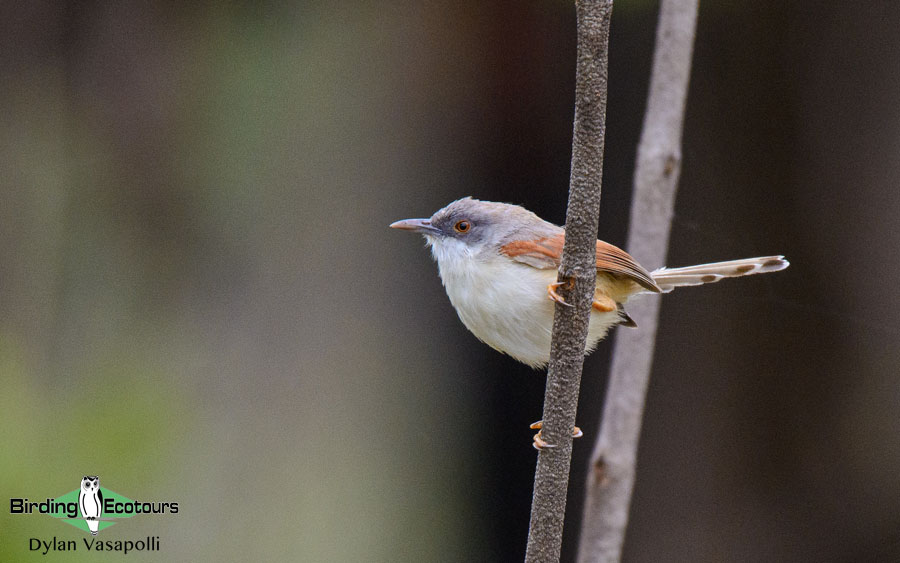
Zambezi River Delta
The transect now proceeds north to the Zambezi River Delta, where vast tracts of lowland forest and miombo woodland have been protected by hunting concessions. Most birders are now visiting this area, specifically Coutada (Hunting Concession) 12, instead of the ‘classic’ Chinizuia, which is deteriorating rapidly as the rate of deforestation there has been unprecedented. Chinizuia is described in detail by Cohen et al. (2006) but birding there now is not nearly as good as it was when that book was published. When access across the Chinizuia Stream bridge is possible, good forests with excellent birds can still be accessed, and the exciting area between here and the coast might be worth exploring if you are well equipped for a ‘real adventure’. However, it is much easier just to visit Coutada12, which is highly accessible and probably holds much larger populations of all of the ‘specials’ mentioned below. Please note that Coutada 12 is private property and it is essential to contact the owners and pay a nominal fee. For more information on who to contact, please write to [email protected]. Only a small part of Coutada 12 has been thoroughly explored to date by birders (usually looking primarily for the almost ‘staked-out’ African Pittas), and other nearby Zambezi Delta coutadas are also fabulous for birding, but very poorly explored – which means that new discoveries can still be made. Coutada 11 was described in an excellent report by Rossouw & Sutherland (1999), but since most birders find what they want in the easily accessible part of Coutada 12, Coutada 11 is often ignored, and in fact the remainder of the vast Zambezi Delta remains amazingly under birded. There is even the possibility of finding the localized Böhm’s Bee-eater Merops boehmi just south of the Zambezi, and this species would be new for the region dealt with by the southern African field guides. The still-pristine Inhamatinga, Mozambique’s largest forest, which had been virtually ignored by birders except for those patches extending into Coutada 12, has recently been found to hold, among others, a large population of White-chested Alethe Alethe fuelleborni (Davies et al. in prep.). Other Mozambican forests contiguous with the famous Haroni–Rusitu River confluence in the foothills of Zimbabwe’s Chimanimani Mountains also beg exploration.
Now well known (at least compared to when the Cohen et al. 2006 bird-finding guide was published) Coutada 12 is very productive birding territory. Two highly range-restricted skulkers are very common here – East Coast Akalat Sheppardia gunningi and White-chested Alethe. If you know their calls, you will realise how locally common both species are, but acquiring views of them requires considerable patience. Other important birds to look for in this area include Southern Banded Snake Eagle Circaetus fasciolatus, Barred Long-tailed Cuckoo Cercococcyx montanus, Thick-billed Cuckoo, Tiny Greenbul Phyllastrephus debilis (very common), Black-headed Apalis Apalis melanocephala, Livingstone’s Flycatcher Erythrocercus livingstonei, Plain-backed Sunbird Anthreptes reichenowi, and Chestnut-fronted Helmetshrike Prionops scopifrons (which sometimes occurs in mixed flocks with the other two southern African helmetshrikes). Mangrove Kingfisher Halcyon senegaloides is also common here but is resident in a non-mangrove habitat.
Although widespread, one of the most sought after species in the Zambezi Delta is African Pitta, since this has become one of only a handful of fairly reliable sites for this bird. African Pitta breeds in fair numbers along the Lower Zambezi River, where it is relatively easy to find. In late November and early December, after the first rains fall, usually around this time of year, the pitta begins displaying. During this period, males spend much of their time on a chosen perch 1–9m off the ground (Hockey et al. 2005) from where they periodically make a hopping display accompanied by a far-carrying call. Birders can find displaying birds with some ease once they understand the ventriloquial nature of the call. The species is very tough to find when not displaying as it skulks on the forest floor.
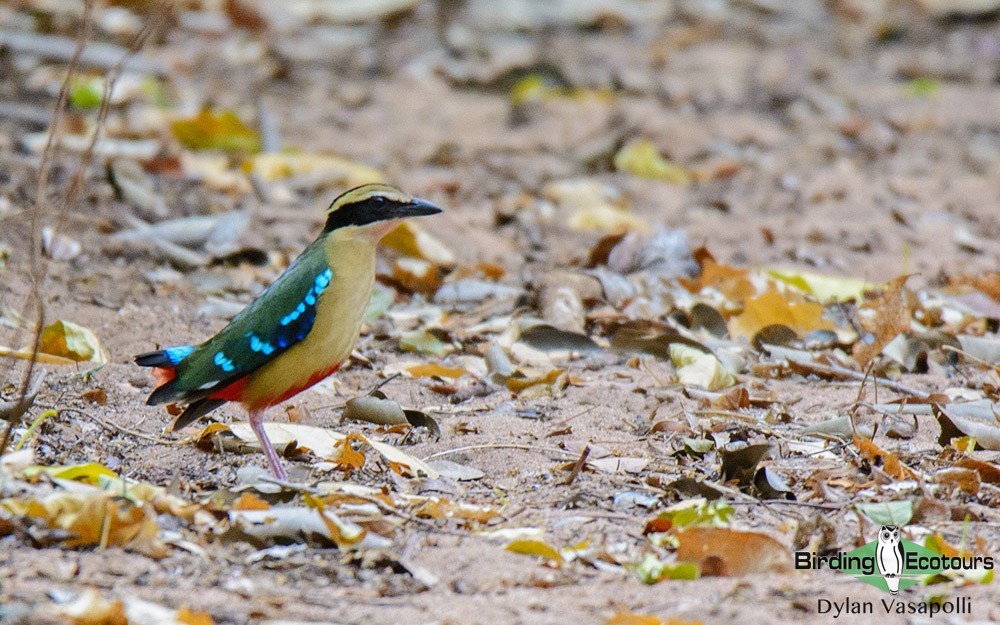
Rio Savane
This very extensive wetland system is conveniently located just outside Beira, the end-point of the transect and where I suggest flying out of, unless you wish to proceed south or north in search of birds also occurring in South or East Africa. Olive-headed Weaver Ploceus olivaceiceps, as well as Mozambique / South Africa endemics such as Rudd’s Apalis Apalis ruddi, Neergaard’s Sunbird Cinnyris neergaardi, Pink-throated Twinspot Hypargos margaritatus and Lemon-breasted Canary Serinus (=Crithagra) citrinipectus are for example, found in the Panda miombo woodlands, and after birding this area flying from Inhambane would make better sense. If you proceed north, there are many good sites to visit, but the overlap in birds with Malaŵi and Tanzania is marked.
Since Mozambique opened up to birders after the civil war ended, Rio Savane has become a bigger and better site for some, but not all, of the water-associated species mentioned for Harare’s wetlands at the beginning of this article. Moreover, some of these species remain year round at Rio Savane, whereas in Harare they may be more seasonal. Birds to look for at Rio Savane include Blue Quail, Short-tailed Pipit Anthus brachyurus, Locust Finch and Cuckoo Finch. Rufous-bellied Heron Ardeola rufiventris abounds and interestingly this is one of southern Africa’s best sites to find Eurasian (Great) Bittern Botaurus stellaris.
When to go and what to expect
Streaky-breasted Flufftail, Striped Crake and other wetland birds are most easily seen between January and March but only in years of good rainfall. In drier years they may only be present in small numbers and can be extremely difficult to find (not that these elusive rallids are ever easy to see). Zambezi Indigobird is also most easily seen between January and March when it is in breeding plumage and displaying conspicuously. However, Mozambique is logistically easier to visit in the dry season and at the very beginning of the wet season (which is usually early December) due to many of the roads becoming muddy. This is also the only period that observers have a realistic chance of locating African Pitta, which is extremely elusive once it has ceased displaying and has laid eggs. It can still be stumbled across until April or even May before it departs for equatorial Africa where it spends its non-breeding season, but seeing one at this time will require considerable good fortune. In the austral summer the local ‘specials’ are joined by many Eurasian and intra-African migrants, which can include species rare in southern Africa such as Collared Flycatcher. A couple of species such as Mascarene Martin Phedina borbonica and Malagasy Pond Heron Ardeola idae migrate from Madagascar to the mainland coast of Mozambique during the austral winter, and some birders visit then with the aim of adding these birds to their regional lists.
Mozambique is extremely hot and humid in summer (November–March) but this is the best time to find some of the globally localised species that are the focus of this article. However, quite a number can just as easily be found in winter. Much of Zimbabwe has milder weather since large parts of the country are on the Mashonaland Plateau (Harare, for example, is almost 1,500m above sea level), and in the Eastern Highlands it can get rather cold even in mid summer. The Eastern Lowlands of Zimbabwe are just as ‘steaming’ as Mozambique, as is the Zambezi Valley bordering Zambia. Malaria is a potential risk throughout this transect, especially after the rains have fallen. Africa’s large mammals sometimes also pose a threat. Land mines may still be present in some areas but the consensus of opinion is that they don’t present a risk at the birding sites described, and I am unaware of any problems in the almost two decades since the war ended, but one does need to consider the danger.
Infrastructure
Zimbabwe possesses an excellent network of well surfaced paved roads, meaning that a normal car is perfectly adequate for visiting most of the birding areas throughout the country. There is also a fantastic network of B&B establishments and hotels. I usually recommend the comfortable but basic ones with en suite bathrooms, but in some areas upmarket options are also available.
Mozambique’s infrastructure has been steadily improving since the civil war ended in 1992. However, roads to some of the birding areas, especially in the wet season, certainly require a high-clearance 4×4 vehicle. Accommodation in Mozambique is typically rustic but adequate for most birders, albeit perhaps barely so. Options are improving as the years go by. In some instances, I recommend staying at lodges that are fairly comfortable – the main disadvantage is that these establishments are not always sited at the best birding sites; for example, Mpingwe is approximately an hour from Coutada 12, which adds considerably to the driving each day. I recommend that birders consider some days of camping when in Mozambique, although all of the ‘specials’ can be seen without doing this.
Recommended Accommodation
I usually start with Crake Cottage in Harare, which is conveniently situated close to Monavale Vlei. Proceeding to the Eastern Highlands, White Horse Inn and Seldomseen are often used places in ‘The Vumba’. There are numerous establishments slightly further north around Inyanga National Park, whilst in the nearby Honde Valley below Inyanga, Aberfoye is my usual choice. Crossing into Mozambique, Casa Msika is a good place to stay if accommodation is needed to break the journey. Otherwise you might continue straight to Gorongosa where the Gorongosa Adventures camp (previously Envirotrade camp; gorongosaadventures.blogspot.com) is a convenient, but more rustic, option compared to Chitengo Camp within the national park. Gorongosa Adventures offers excellent trips up Mount Gorongosa in search of the special birds, and they organise permission from the chief and other logistics sometimes tricky to arrange on your own. To access Coutada 12, Mpingwe Camp is apparently the closest establishment and is a fairly comfortable place. In Beira, many places are available and while most people prefer to stay near the beach, I sometimes use the rather rustic Bispo Hotel, which is a little closer to Rio Savane on the outskirts of Beira. Alternatively, I stay at the Rio Savane Resort but ferry times across the estuary to the wetlands don’t fit a birder’s schedule, unless you can persuade the owner to add special departures. Please e-mail for additional contact details for any of these establishments.
Acknowledgements
Ron Demey and Guy Kirwan provided valuable comments on the manuscript, as did Greg Davies, who also provided birding information prior to my first extensive trip to Mozambique. Rene Coetsee, Colin Gerrans, Errol de Beer and Niall Perrins preceded me in visiting these parts, and also freely gave advice, as did many of the other birders I met in the field.
Chris Lotz, Birding Ecotours
References
Cohen, C., Spottiswoode, C. & Rossouw, J. 2006. Southern African Birdfinder. Cape Town: Struik.
Davies, G. B. P., Symes, C. T. & Pietersen, D. W. in prep. Inhamatinga Forest – the largest indigenous forest in Mozambique and aspects of its avifauna.
Fishpool, L. D. C. & Evans, M. I. (eds.) 2001. Important Bird Areas in Africa and Associated Islands: Priority Sites for Conservation. Newbury: Pisces Publications & Cambridge, UK: BirdLife International.
Hockey, P. A. R., Dean, W. R. J. & Ryan, P. G. (eds.) 2005. Roberts – Birds of Southern Africa. Seventh edn. Cape Town: Trustees of the John Voelcker
Bird Book Fund.
Rossouw, J. D. & Sutherland, A. C. 1999. The birds of Coutada 11, Lower Zambezi River, Mozambique. Durban Nat. Sci. Mus. – Bird Dept. Res. Rep. 10:
1–34.
